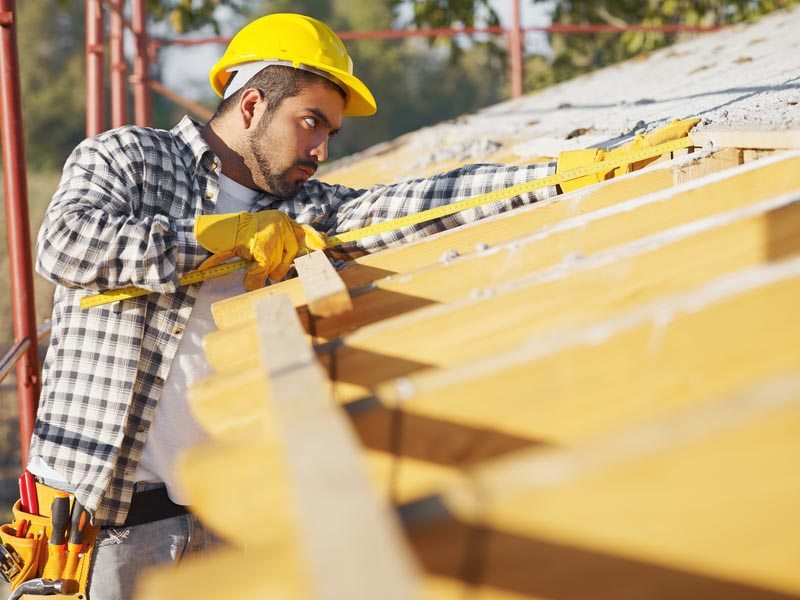Andy Butchers, Director of Build-Zone Survey Services shares his insider knowledge to help you troubleshoot this key element of your building project
It may be stating the obvious, but every house needs a robust roof to close up the structure and protect it from the elements. Given it will be acting as the first line of defence, it’s perhaps not surprising that roofing issues are by far the biggest area of insurance and warranty claims. And what’s the most common problem? You guessed it: water ingress.
What’s frustrating for self-builders and renovators who encounter this kind of scenario is that, with a little more thought from their designers and contractors, most of these problems can be completely eliminated. Here’s what to watch out for on your project.
Pitched roofs
One of the fundamental causes of leaks and other issues – such as tiles lifting in heavy winds – is the use of poor or incorrect fixings. Amazingly, I’ve recently seen one slate covering that was fixed with silicone sealant (a trick that’s sometimes used for patch repairs, but isn’t suitable for a whole roof) rather than the correct dry clips.
Some suppliers now offer complete roofing packages that include all the battens, clips, nails and other products required for a project, which can give extra peace of mind that you’re specifying the right items.
A common mistake regarding workmanship is when installers use their wall bedding mortar mix for the roof too. This is, quite simply, wrong – as the mortar performs a very different job on a roof. It needs to be much more flexible and is much more exposed to the elements than walling mixes.
Poor setting out of the tiles can lead to slates and tiles not draining properly into gutters. Other trouble spots to look out for at the installation stages include flashings, stepped cavity trays and soakers. Fractured tiles and similar issues can sometimes go unnoticed too, while you should always avoid using inadequately certified materials (such as slates with high pyrite content, which can cause unsightly rusting).
Flat roofs
A high percentage of insurance claims are made on flat roofs. These are rarely due to the materials used – but more often caused by poor workmanship when the structure and covering were installed. Sometimes this is simply down to the fitter not knowing how to use the materials. So always check your contractor has a successful track record of using the product at hand.
You might be amazed by some of the issues I’ve seen over the years. In some cases, the designer has specified a cold roof construction (where the insulation is fitted between the rafters with a ventilation gap above), but a cheaper warm roof (insulated above the rafters) has been put in. This kind of mistake can lead to condensation issues, which has the potential to cause serious damage – so spotting it early on is vital. At Self Build Zone if we know a flat roof is being specified, we always add an extra inspection point to ensure the work is being done properly.
A common issue encountered on new building work is inadequate drainage. Water pooling on flat roofs is a recipe for disaster, so they should be designed with minimum falls of 1:40, which gives a bit of legroom for inaccuracies in construction. Both internal outlets and external guttering systems can be used – but they must offer enough capacity to deal with local storm events. It’s usually best to include two drainage points in case one fails.
Another pitfall to watch out for is inadequate guarantees. Whether insurance-backed or not, it’s important to check that they’re sufficient to cover the full cost of the roof’s replacement – including workmanship and materials.
Health & safety
In some ways, roofers are the daredevils of the construction world. For obvious reasons, they spend a fair amount of time working at height – but unfortunately with high levels of casual employees and staff turnover, occasionally the safety regulations aren’t followed. If this happens on your site, you could be the one liable for covering any resulting injuries. So even if your subcontractor has their own insurance, you should still take out a specific self-build or renovation insurance policy.
I’d also recommend that you only use products and services from suppliers who offer a ten-year insurance-backed guarantee – especially if you’re dealing with flat roofs. A good guarantee will cover you in the event of any problems developing over that period, and can be an indication of the quality of the company you’re dealing with.
More information
Andy Butchers is a building surveyor with over 25 years’ experience in the construction industry – and regularly shares his knowledge to help self-builders and renovators avoid and overcome issues on their projects. He is a director of Build-Zone Survey Services, the technical services company for Build-Zone and Self Build Zone.
Call 01732 744186 or visit www.bzss.co.uk to find out more.
Andy Butchers
Director
Build-Zone Survey Services
Please note: this is a commercial profile















Thank you for sharing this helpful information with respect to pitched roofs and flat roofs along with what kind of issue we might face. One should also consider different roofing problems like water damage, tree damage, pooled water, faulty roof flashing, roof punctures, membrane shrinkage, blocked gutters,poor ventilation while going for roofing.